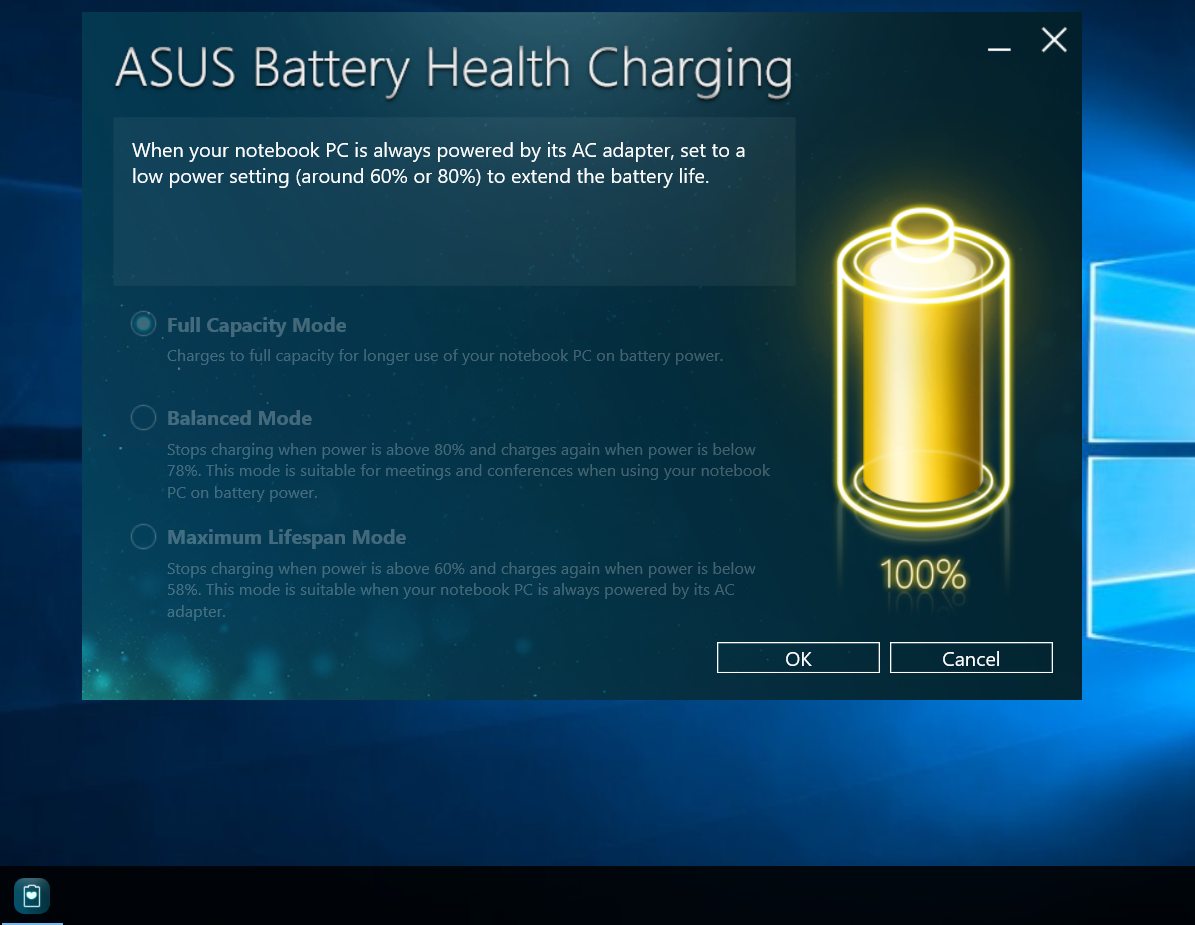

- #ASUS BATTERY HEALTH CHARGING SIMILLAR INSTALL#
- #ASUS BATTERY HEALTH CHARGING SIMILLAR UPDATE#
- #ASUS BATTERY HEALTH CHARGING SIMILLAR DRIVER#
- #ASUS BATTERY HEALTH CHARGING SIMILLAR WINDOWS 10#
My laptop restarted twice during the process. The laptop will enter the BIOS screen and you will see a progress indicator. Make sure you are plugged-in or your battery level is high.
#ASUS BATTERY HEALTH CHARGING SIMILLAR UPDATE#
Click Update and afterwards, it will ask you to reboot so it can flash the BIOS.

The Update button should not be grayed out anymore. Run WinFlash using that modified shortcut and select the downloaded BIOS file. "C:\Program Files (x86)\ASUS\WinFlash\WinFlash.exe" /nodate On the leftmost end of the target path, after the double quotes, add a blank space then type in "/nodate" without the quotes. Right click on the WinFlash shortcut and select properties. This will open a Windows Explorer showing the start menu shortcuts. Right click on the WinFlash icon and select "Open file location". Your laptop model might be different so choose according to your laptop model. I guess the most recent BIOS update addresses some of the spectre vulnerability and they do not want you to downgrade BIOS version but my battery life is much more important for me.ĭowngrade to BIOS version 302.

Do not use the latest version 3.2.5 or above as it no longer allows the /nodate option.
#ASUS BATTERY HEALTH CHARGING SIMILLAR INSTALL#
I've tried downloading WinFlash from Asus site but downgrading BIOS with the /nodate trick doesn't work.ĭownload Asus WinFlash 3.0.1 and install it.

When I tried upgrading the BIOS, I've found out that the one installed version 305 at the time of this writing does not yet exist on Asus support page (some forums says Microsoft update is responsible for this) and the most recent was just 304. I've tried updating Ubuntu Kernels but to no avail. However, my laptop went back to the store for repair (intermittent wifi connection on 5GHz band) and when I received it (restored to original factory default, Ubuntu erased) and installed again Ubuntu 18.04 that feature no longer persist. I was happy with this setup since it is better than to have no threshold control at all. It will only revert to original state (charges up to 100%) if I power off my laptop, unplug the adapter, power it on and boot to Ubuntu directly without going first to Windows or if I set it to 100% using the battery app in Windows. Even thought I disconnect the power adapter and allowed it to drain the battery, plugging it in again charges it up to 59% or 79% depending on the preset threshold (it is always 1 percent short than the indicated threshold level). 60% before rebooting to Ubuntu 18.04 (without powering off or shutting down) will persist the charge threshold. (next time I'll be buying Thinkpads instead).īut I found out that booting to Windows and setting the charge threshold to i.e.
#ASUS BATTERY HEALTH CHARGING SIMILLAR DRIVER#
I've learned that the driver to make this work is vendor specific and that Asus has no driver support for Linux like Thinkpads does with TLP. I use the battery only if I work while on long trips, so I searched for a similar app for Linux. I plug my laptop whenever there is an AC power available and it stays plugged in when I'm working.
#ASUS BATTERY HEALTH CHARGING SIMILLAR WINDOWS 10#
But since I only use Windows 10 for gaming, I've setup my working environment and install Ubuntu 18.04 dual booting on Windows 10. I owned an Asus X405UQ which came with this Battery Health Charging app that controls the charging threshold.


 0 kommentar(er)
0 kommentar(er)
